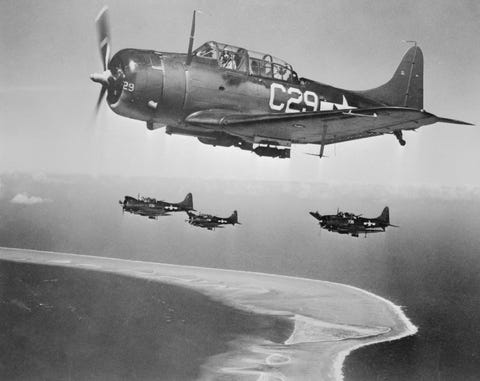The Gulf of Mexico is Full of Unexploded Bombs and Mustard Gas
Millions of pounds of unexploded bombs rest at the bottom of the gulf, and nobody knows where they are.
By Kyle Mizokami GETTY IMAGESBETTMANN
GETTY IMAGESBETTMANNA dark legacy of warfare still sits on the bottom of the world's bodies of water, including millions of pounds of unexploded bombs and other explosive devices. In the Gulf of Mexico, that tally could even include containers of the chemical weapon mustard gas. Some of them are in areas marked for resource exploitation, including fishing and undersea oil drilling, heightening fears they could cause a manmade disaster.
After World War II, the U.S. military began dumping surplus munitions into the oceans as a way to get rid of them. According to William Bryant and Neil Slowey, oceanographers at Texas A&M University, at least 31,000,000 pounds of bombs were disposed in the Gulf of Mexico and in the shores off 16 states, including New Jersey and Hawaii. The dumping started in 1946 and ended in 1970.
The munitions, says Texas A&M Today, include 250-, 500-, and 1,000-lb. aircraft bombs, as well as items such as land mines. Many are weapons captured from Germany at the end of World War II. “Several types” of chemical weapons were dumped, including containers of mustard gas. A chemical agent that affects the respiratory system, mustard gas was widely used during World War I. It was stockpiled by many countries during World War II but never used.
Nobody—not even the military—really knows how many bombs are out there, or where they are located. Oceanographers believe some of the bombs are in areas marked for oil drilling, raising concerns that they are a danger to the 30,000 oil workers working in the Gulf of Mexico at any one time. Shrimpers have hauled up mustard gas barrels and other munitions in their nets.

TEXAS A&M TODAY
A map of the Gulf of Mexico with known locations of some of the munitions points to concentrations off the coast of Corpus Christi, Pensacola, and New Orleans, all of which are longtime hosts to naval aviation bases. During World War II, the Gulf of Mexico was considered a safe overwater location for training naval aviators, a practice that continues to this day.
“The bottom line is that these bombs are a threat today and no one knows how to deal with the situation,” Texas A&M Today quotes Bryant. “If chemical agents are leaking from some of them, that’s a real problem. If many of them are still capable of exploding, that’s another big problem.”
No comments:
Post a Comment